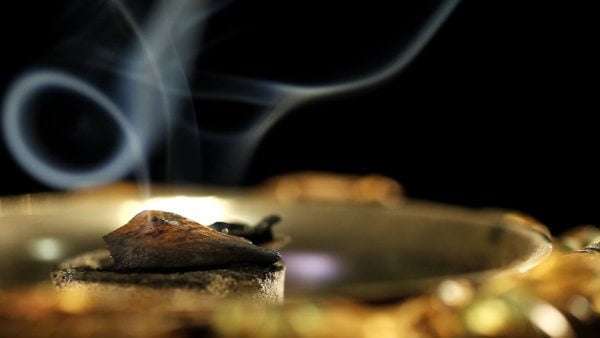
The perfumes Anuja Aromatics and the 4 different Therapy for your Well-being
LITHOTHERAPY AND FRAGRANCE DIFFUSER PENDANTS Anuja Aromatics
Oud wood is particularly rare and precious. It has several names depending on the culture: Agarwood, eaglewood, calambac, aloeswood... All these names can obviously lead to confusion when they are not familiar to us, especially since this material is not widespread in our Western countries.
And most people consider it the “wood of the gods”.
Its scent is bewitching, and relates to a fragrant, dark resin, formed through physiological and biological reactions, including the colonization of a type of mold-forming bacteria.
Oud wood has been used for many centuries in Asia, and has many health and spiritual benefits. Thus, it is frequently encountered in art or religion. It is found in three forms: in oil, in raw form, or in powder.
Due to its rarity and specificities, calambac is very expensive compared to other types of wood such as sandalwood (palo santo) for example.

Four families of trees produce Agarwood:
Lauraceae : trees located in South America
Burseraceae : are also located in South America
Euphorbiaceae : located in the tropics
Thymeleaceae : located in Southeast Asia
Oud wood can form depending on various factors:
Raw formation: following natural events such as strong winds or storms, the branches will crack or break, the trees will then secrete resin which will heal their wounds, this produces oud wood. The same is true when animals scratch trees.
Formation by colonization: the wood is invaded by fungi, which will produce moss on the outside of the tree. The latter will seek to protect itself and will secrete resin.
Training thanks to insects: the trees will be colonized and attacked by insects. The principle is the same, to protect itself the tree will secrete resin.
Formation by ripening: the resin secreted in large quantities can block the veins and channels of the tree. The latter will then rot little by little and die, thus naturally releasing the resin.
Training by ablation: when the tree is infected or particularly damaged, parts can detach from it. These are filled with resin.
The resin forms in the heart of the trunk of the tree and allows it to defend itself naturally. At first the wood is light, but the resin continually increasing the wood will gradually change color, turning from beige to dark brown. Sometimes it can be black.
Man generally leaves little time for nature to do its work itself. To increase the yield (only 7% of trees are infected by fungi in their natural state), he does not hesitate to infect trees himself so that the resin develops.
The resin can then be turned into oil, by distilling wood chips. Note that it is necessary to have 70 kg of oud wood to form 20 ml of oil.

LITHOTHERAPY AND FRAGRANCE DIFFUSER PENDANTS Anuja Aromatics

The Perfume ÉLIXIR DES CIEUX with its floral, luxurious scent,